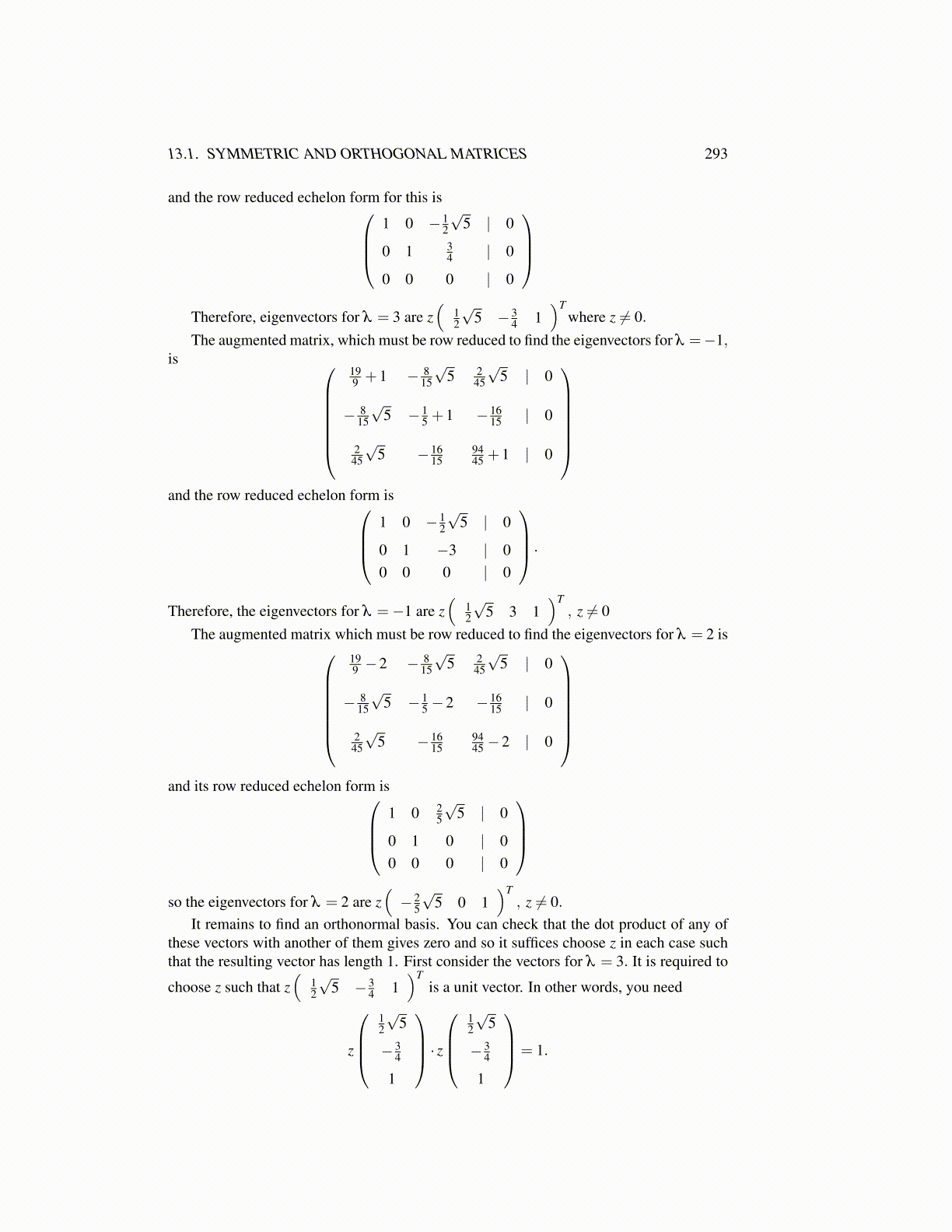
13.1. SYMMETRIC AND ORTHOGONAL MATRICES 293
and the row reduced echelon form for this is1 0 − 1
2
√5 | 0
0 1 34 | 0
0 0 0 | 0
Therefore, eigenvectors for λ = 3 are z
(12
√5 − 3
4 1)T
where z ̸= 0.The augmented matrix, which must be row reduced to find the eigenvectors for λ =−1,
is
199 +1 − 8
15
√5 2
45
√5 | 0
− 815
√5 − 1
5 +1 − 1615 | 0
245
√5 − 16
159445 +1 | 0
and the row reduced echelon form is
1 0 − 12
√5 | 0
0 1 −3 | 00 0 0 | 0
.
Therefore, the eigenvectors for λ =−1 are z(
12
√5 3 1
)T, z ̸= 0
The augmented matrix which must be row reduced to find the eigenvectors for λ = 2 is
199 −2 − 8
15
√5 2
45
√5 | 0
− 815
√5 − 1
5 −2 − 1615 | 0
245
√5 − 16
159445 −2 | 0
and its row reduced echelon form is
1 0 25
√5 | 0
0 1 0 | 00 0 0 | 0
so the eigenvectors for λ = 2 are z
(− 2
5
√5 0 1
)T, z ̸= 0.
It remains to find an orthonormal basis. You can check that the dot product of any ofthese vectors with another of them gives zero and so it suffices choose z in each case suchthat the resulting vector has length 1. First consider the vectors for λ = 3. It is required to
choose z such that z(
12
√5 − 3
4 1)T
is a unit vector. In other words, you need
z
12
√5
− 34
1
· z
12
√5
− 34
1
= 1.